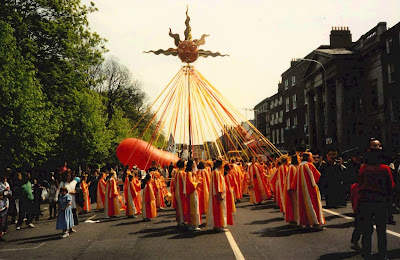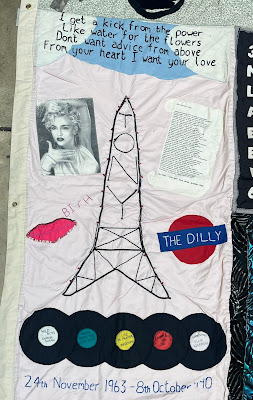The Police, Crime, Sentencing and Courts Act 2022 is now law, bringing in new police powers
summarised by Liberty as including:
Creating a ‘buffer zone’ around Parliament.
Giving police power to impose noise-based restrictions on protest.
Criminalising one-person protests.
Giving police power to impose restrictions on public assemblies.
Creating the offence of wilful obstruction of the highway.
Powers to criminalise trespass.
No sooner has it passed than it was announced in the Queens Speech this week that one of the Government's key forthcoming priorities is to pass yet more laws against protests.
None of this is really about police 'needing' new powers - they have for instance had the power to arrest people for obstructing the roads for decades. As with the inhumane plans to deport asylum seekers to Rwanda, this is a theatre of performative cruelty which aims to appease and politically mobilise that section of the population that seethes and resents those seen as 'other' and bringers of social, demographic or political change. But the Government is clearly trying to create a hostile environment for protestors after several waves of inspiring demonstrations over the past couple of years.
Here's a selection from the movements since 2020, as seen from London.
Black Lives Matter
The police murder of George Floyd in Minneapolis on May 25th 2020 sparked a global wave of Black Lives Matters protests. One of the biggest in London took place on 7 June 2020 with at least 50,000 people starting out from near the American Embassy - crowd seen here heading on to Vauxhall Bridge.
Sarah Everard Protests
The murder of Sarah Everard by a serving police office in March 2021 saw the heavy handed policing of a vigil at Clapham Common (near where Sarah was kidnapped) and many local protests against rape and sexual violence, including walk outs from some schools. Picture below is of school students in Trafalgar Square in April 2021.
Kill the Bill protests
What was originally known as the Policing Bill met with a movement of opposition including riots in Bristol in April 2021 (
for which 12 people are currently in prison) and protests in many other places. Pictures below are from London demo from Hyde Park, April 2021.
Kill the Bill posters (these were flyposted around Brockley, South London):
Priti Patel, useless criminal (from Brick Lane, April 2021)
Kill the Bill protest squat of former Camberwell police station, Summer 2021
Trans Rights
Small demonstration in Trafalgar Square against conversion therapy, September 2021
Refugees
Extinction Rebellion
Climate emergency protests from Extinction Rebellion and related groups are an explicit target of new police powers. Why can't the Government just be left in peace to do nothing about climate change?
31 August 2021 - Extinction Rebellion blocking approach to the north end of Tower Bridge:
 |
| Police surrounding sound system |
April 2022 - Extinction Rebellion week of action including here on 16 April a march from Hyde Park up Edgware Road.
 |
| Samba band leaving Hyde Park |
 |
| 'Nationality and Borders Bill is Racist' - yes it is, and i'ts now law |
The new laws are designed to make protests more difficult but they will not drive us off the streets!

















































